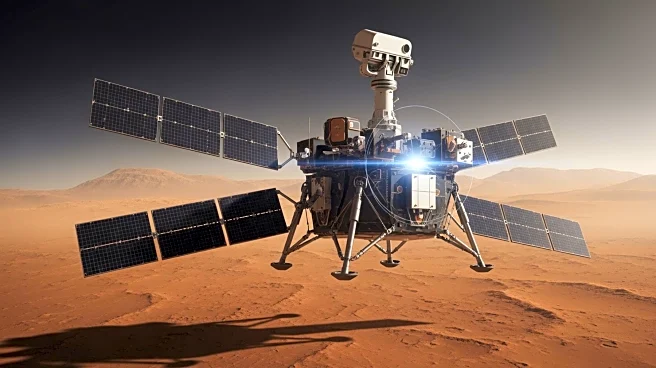What's Happening?
Astronomers have captured a massive plasma eruption from a young Sun-like star, EK Draconis, providing insights into the early solar activity that may have influenced the development of life on Earth.
The international research team, led by Kosuke Namekata of Kyoto University, used a combination of space- and ground-based observatories to observe the star. The study revealed a multi-temperature coronal mass ejection (CME), with plasma heated to about 100,000 degrees Kelvin expelled at high speeds, followed by cooler gas. This discovery helps scientists understand how early solar explosions could have shaped planetary atmospheres and contributed to the conditions necessary for life.
Why It's Important?
The findings are significant as they offer a glimpse into the intense solar activity that characterized the early Sun, which may have played a crucial role in creating the environmental conditions necessary for life on Earth. The study suggests that powerful CMEs could have triggered chemical reactions that produced biomolecules and greenhouse gases, essential for sustaining life. This research enhances our understanding of how solar activity may have influenced the atmospheres of early Earth, Mars, and Venus, and could inform future studies on the potential for life on other planets.
What's Next?
The research team emphasizes the importance of global collaboration in studying solar phenomena. Future studies may focus on observing other young Sun-like stars to further understand the variability and impact of early solar activity. These findings could also lead to advancements in predicting space weather events and their potential effects on modern technology and infrastructure.
Beyond the Headlines
The study highlights the importance of international scientific collaboration in advancing our understanding of cosmic phenomena. It also underscores the potential for early solar activity to influence planetary habitability, which could have implications for the search for life beyond Earth. The research may inspire further exploration of the connections between solar activity and the development of life-supporting environments.













